The Everest Base Camp Trek stands out as an epic adventure in Nepal, attracting trekkers with its breathtaking views and rich Sherpa culture. Over the course of 12 days, adventurers journey from Kathmandu to the iconic Everest Base Camp, stopping at vibrant villages like Namche Bazaar and Tengboche along the way. With a mix of stunning landscapes and the chance to acclimatize, this trek offers something for all. But what’s the real essence of this trek? What should trekkers know before they lace up their boots?
Key Points
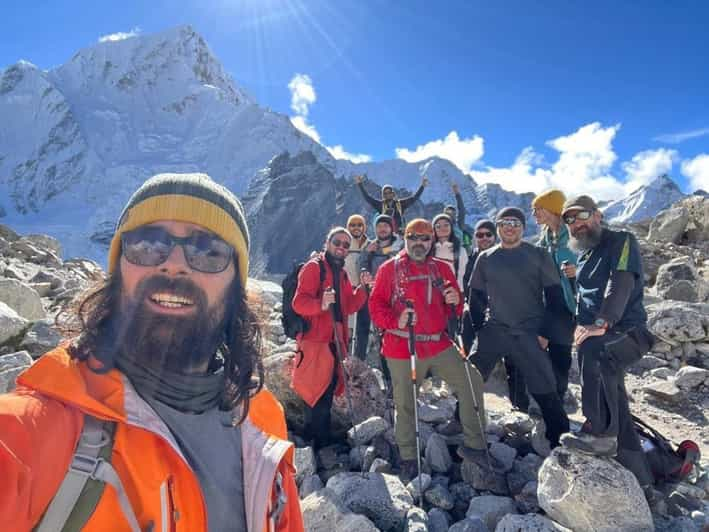
- The Everest Base Camp Trek offers stunning views of iconic peaks and diverse landscapes, making it a premier trekking destination in Nepal.
- The trek includes culture with Sherpa communities, enhancing the overall experience through unique traditions and customs.
- Acclimatization days ensure safety and comfort, allowing trekkers to adjust to altitude while exploring local highlights like Namche Bazaar.
- The trek features well-maintained trails with various terrains, providing an enriching experience for both novice and experienced trekkers.
- Ideal trekking seasons are spring and autumn, offering stable weather and breathtaking scenery, maximizing enjoyment and visibility during the trek.
Trek Overview and Itinerary
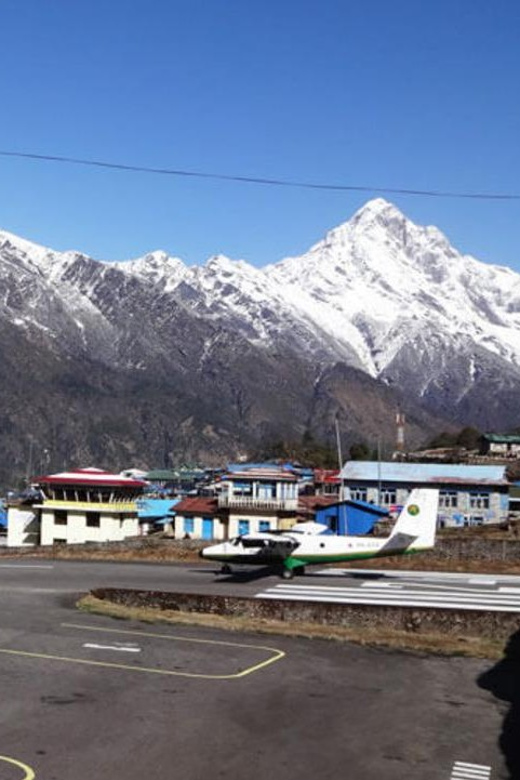
Setting out on a thrilling 12-day trek to Everest Base Camp from Kathmandu, adventurers can expect breathtaking scenery and a well-planned itinerary that leads them through the heart of the Himalayas.
Kicking off with a scenic 30-minute flight to Lukla, trekkers dive right into the stunning landscapes. Key stops like Phakding, Namche Bazaar, and Tengboche punctuate the journey, each offering unique views and rich culture.
Daily trekking hours vary from 3 to 7, so there’s plenty of time to soak it all in. Acclimatization days are strategically placed to help trekkers adjust to the altitude, ensuring everyone can enjoy the majestic sights, including the iconic Everest Base Camp and the stunning vistas from Kala Patthar.
You can also read our reviews of more hiking tours in Pheriche
Trekking Experience
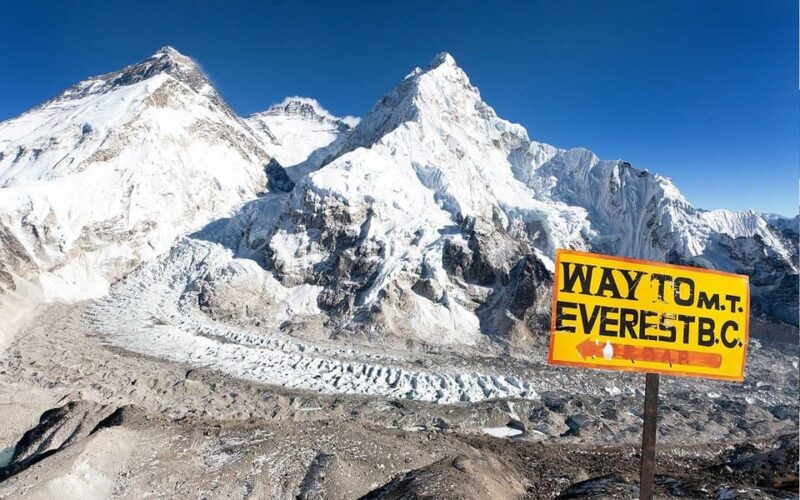
Trekking to Everest Base Camp offers an unforgettable adventure where travelers enjoy Sherpa culture while navigating stunning mountain landscapes and iconic landmarks.
Along the way, they’ll visit the famous Tengboche Monastery, soaking in its serene atmosphere.
Acclimatization days at Namche Bazaar and Dingboche help trekkers adjust to the altitude, ensuring a safer experience.
The trail features thrilling suspension bridges, picturesque alpine meadows, and rugged moraines.
Travelers can also enjoy breathtaking views from notable spots like the Everest View Hotel and the summit of Kala Patthar, especially during sunrise or sunset.
Every step taken brings them closer to the majestic Everest and the rich culture of the Himalayas, making each moment a cherished memory.
Inclusions and Exclusions
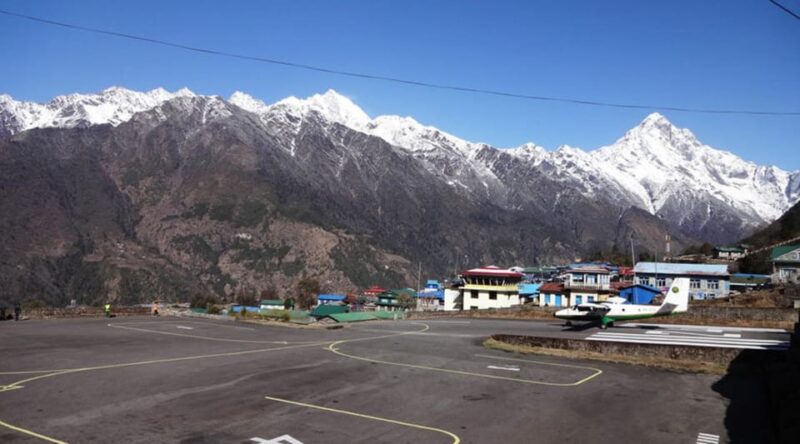
When planning the Everest Base Camp trek, it’s essential to know what’s included and what you’ll need to cover on your own. This trek comes with some fantastic inclusions, but there are also a few things you should budget for. Here’s a quick rundown:
-
Professional English-speaking trekking guide
-
Accommodation in lodges/tea houses
-
Permits for Sagarmatha National Park
-
First aid kit and airport transfer
On the flip side, trekkers should keep in mind these exclusions:
-
Nepal entry visa fee
-
Travel insurance
-
Personal trekking equipment
-
Food and beverages (around $5-$7 per meal)
Being aware of these details can help make your trekking adventure smoother and more enjoyable!
Important Information and Preparation
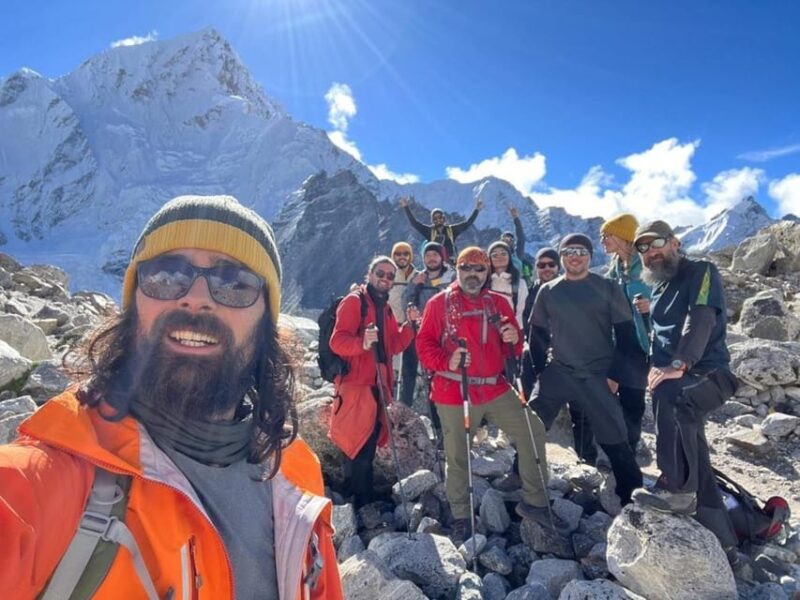
Preparing for the Everest Base Camp trek requires some important considerations to ensure a safe and enjoyable adventure in the stunning Himalayas.
First, this trek isn’t suitable for kids under 12, pregnant women, or anyone with mobility issues or heart problems.
Gear up with comfortable shoes, warm clothing, a hat, camera, snacks, sunscreen, water, gloves, cash, and a copy of your passport.
It’s crucial to leave behind prohibited items like smoking materials, alcohol, and glass objects.
Staying hydrated and respecting local customs goes a long way.
Don’t forget to check the weather, as conditions can change rapidly.
With the right preparation, trekkers can fully embrace the beauty and culture of this incredible journey!
More Great Tours NearbySafety and Guidelines

Staying safe on the Everest Base Camp trek is crucial, so trekkers should always follow their guide’s instructions and take acclimatization seriously to prevent altitude sickness.
It’s not just about reaching the summit; it’s about enjoying the journey while keeping health and safety in mind.
Here are some essential safety guidelines:
-
Get adequate travel insurance that covers high-altitude trekking.
-
Stay hydrated and carry enough water to avoid dehydration.
-
Dress in layers to adapt to changing weather conditions.
-
Respect local customs and be mindful of your surroundings.
Best Time to Trek
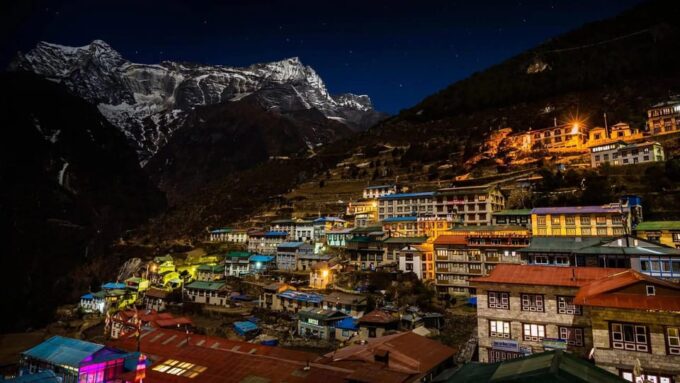
Choosing the best time to trek to Everest Base Camp can make all the difference in the experience, ensuring trekkers enjoy clear skies and stunning views while navigating the challenging terrain.
The ideal seasons are spring (March to May) and autumn (September to November). During these months, the weather’s generally stable, with less chance of rain and clearer visibility.
Spring showcases blooming rhododendrons, adding vibrant colors to the landscape, while autumn offers crisp air and breathtaking sunsets.
Trekking in winter or monsoon can lead to harsh conditions and limited visibility, making the journey more challenging.
Physical Fitness Requirements
Trekking to Everest Base Camp isn’t just a scenic adventure; it demands a solid level of physical fitness and endurance to tackle the varied terrain and altitude changes. While it’s not a professional athlete’s game, getting in shape beforehand will make the trek way more enjoyable.
Here’s what to focus on:
-
Cardio: Build stamina with activities like hiking, running, or cycling.
-
Strength Training: Focus on legs, core, and back to handle steep climbs.
-
Hiking Practice: Try out local trails to get comfortable with uneven surfaces.
-
Flexibility: Incorporate stretching to prevent injuries and aid recovery.
Cultural Etiquette and Customs
Understanding and respecting local customs is key to enjoying the Everest Base Camp trek while fostering positive interactions with the Sherpa community. Travelers should embrace the rich culture, which is evident in daily life, festivals, and religion.
Here’s a quick guide to some essential customs:
| Custom | Description | Importance |
|---|---|---|
| Greeting with "Namaste" | A respectful way to say hello | Shows respect & warmth |
| Removing shoes | Take off shoes before entering homes/monasteries | Maintains cleanliness |
| Offering gifts | Giving small gifts is appreciated | Symbolizes goodwill |
| Dress modestly | Wear conservative clothing | Shows respect for culture |
| Respecting monasteries | Stay quiet and behave reverently | Preserves spiritual space |
Frequently Asked Questions

What Should I Pack for My Everest Base Camp Trek?
For the trek, they should pack comfortable shoes, warm clothing, a hat, sunscreen, snacks, water, gloves, and a camera. Don’t forget a passport copy and cash for any unexpected expenses along the way!
How Can I Stay Connected During the Trek?
To stay connected during the trek, he can use local SIM cards in Kathmandu or Wi-Fi at lodges. Charging stations are available, but he should bring a power bank for extended battery life.
Are There Laundry Facilities Available on the Trek?
During the trek, laundry facilities aren’t readily available. Most trekkers rely on handwashing their clothes or using local services in village stops. It’s best to pack light and choose quick-drying fabrics to stay fresh!
What Types of Food Can I Expect Along the Route?
Along the trek, travelers can expect a mix of local and Western dishes. They’ll enjoy hearty meals like dal bhat, noodles, and soups, while also finding pizza and pastries in some tea houses. It’s a tasty journey!
Is It Possible to Trek Solo or Do I Need a Guide?
Many trekkers wonder about solo trekking versus guided options. While it’s technically possible to trek solo, hiring a guide’s recommended for safety, navigation, and cultural insights, ensuring a richer and more enjoyable experience overall.
Recap
In short, the Everest Base Camp Trek is an unforgettable adventure that blends stunning landscapes with vibrant Sherpa culture.
With its breathtaking views, unique experiences, and a sense of accomplishment, trekkers return with memories that last a lifetime.
Whether you’re a seasoned hiker or just starting out, this trek has a lot to offer.
So, lace up those boots and get ready for the journey of a lifetime—it’s calling your name!
You can check availability for your dates here:More Hiking & Trekking Tours in Pheriche
More Tour Reviews in Pheriche
Not for you? Here's more nearby things to do in Pheriche we have reviewed
- Everest Base Camp Trek
- Kathmandu: 20 Day Everest Base Camp Trek with Kalapatthar
- Kathmandu : 14 -Day Everest Base Camp with Kala Patthar Trek
- Everest base camp trek 12 days
- Lukla: 11-Day Everest Base Camp Trek from Lukla with Guide
- Nepal: Everest Base Camp with Kalapathar Trek
- From Kathmandu: 12 – Day Everest Base Camp Guided Trek
- Kathmandu: Everest Helicopter Tour with Syangboche Landing
- From Kathmandu: 11- Day Everest Base Camp Trek with Guide
- From Pokhara: 11-Day Budget Everest Base Camp Trek
- Kathmandu : Budget 15-Day Everest Base Camp Trek /2025
- From Lukla: 18-Day Everest Base Camp and Gokyo Lakes Trek
